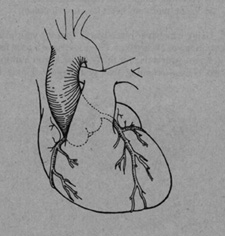 [Every man is a builder of a temple, called his body... We are all sculptors and painters, and our material is our flesh and blood and bone.—Thoreau]
[Every man is a builder of a temple, called his body... We are all sculptors and painters, and our material is our flesh and blood and bone.—Thoreau]
A New Kind of Athlete
We are seeing the emergence of a new kind of athlete in this country. The people involved are not Olympians or members of some school team. These are grown-up athletes, men and women of all ages, who share an appreciation for the psychological and physical benefits of fitness.
They're becoming involved in new kinds of physical activities—most of them long, slow, steady, and noncompetitive. In the process, they have developed a new definition of athletics—doing as well as you can without overdoing it.
The most obvious members of this new group are the runners and joggers. You see them everywhere you go, yet they're just the tip of the iceberg. The most numerous new athletes are the walkers. Then there are bikers, swimmers, rope jumpers, and those—more and more of us all the time—who don't fit into any single category.
I'm one of these new athletes. I've been exercising regularly three to six days a week for the last three years, and, as they say, it's changed my life. From my own experiences and from reviewing the medical literature, I'm convinced that starting a gentle exercise program—even as little as ten or fifteen minutes a day to start—will keep you not only healthier but noticeably happier.
Exercise and Your Heart
Your heart is a muscular pump, an amazing muscle. It is capable of improving its condition in response to exercise at any age. The exercise which will do your heart the most good is one which produces a modestly increased heart rate, maintained at the proper pulse target level over a fairly long period of time. By taking your pulse as you exercise, you can maintain a level of exertion that will build up your heart without subjecting it to undue stress. This desired pulse pattern can be attained by walking, cross-country skiing, exercising on a treadmill, swimming, distance bicycling, or by slow long-distance running.

All these kinds of long, slow exercise will make your heart bigger, stronger, and more efficient. brings about other kinds of bodily changes as well. Oxygen delivery to all parts of the body increases. Over a period of months, your pulse will grow slower and stronger. Excess weight often seems to just fall away. Many of these new athletes find themselves spontaneously cutting down on their smoking and drinking. There is often an increase in sexual drive.
Using Your Pulse as a Guide
You can tell the kind of shape you're in right now by taking your pulse. And during exercise, your pulse can help you keep at just the right level of exertion. In fact, the most important and useful sentence in this whole article is probably this one: The key to painless, safe, and effective exercise is using your pulse as a guide.
How to Take Your Pulse
You'll need a clock or watch that measures seconds. To start with, find your pulse in each of the following places:
With your hand held palm-upward, feel with the first two fingers of the other hand at the-outside of your wrist, just below the base of the thumb (the radial pulse).
With the first two fingers of either hand, reach across your Adam's apple and find the pulse right under the angle of your jaw (carotid pulse).